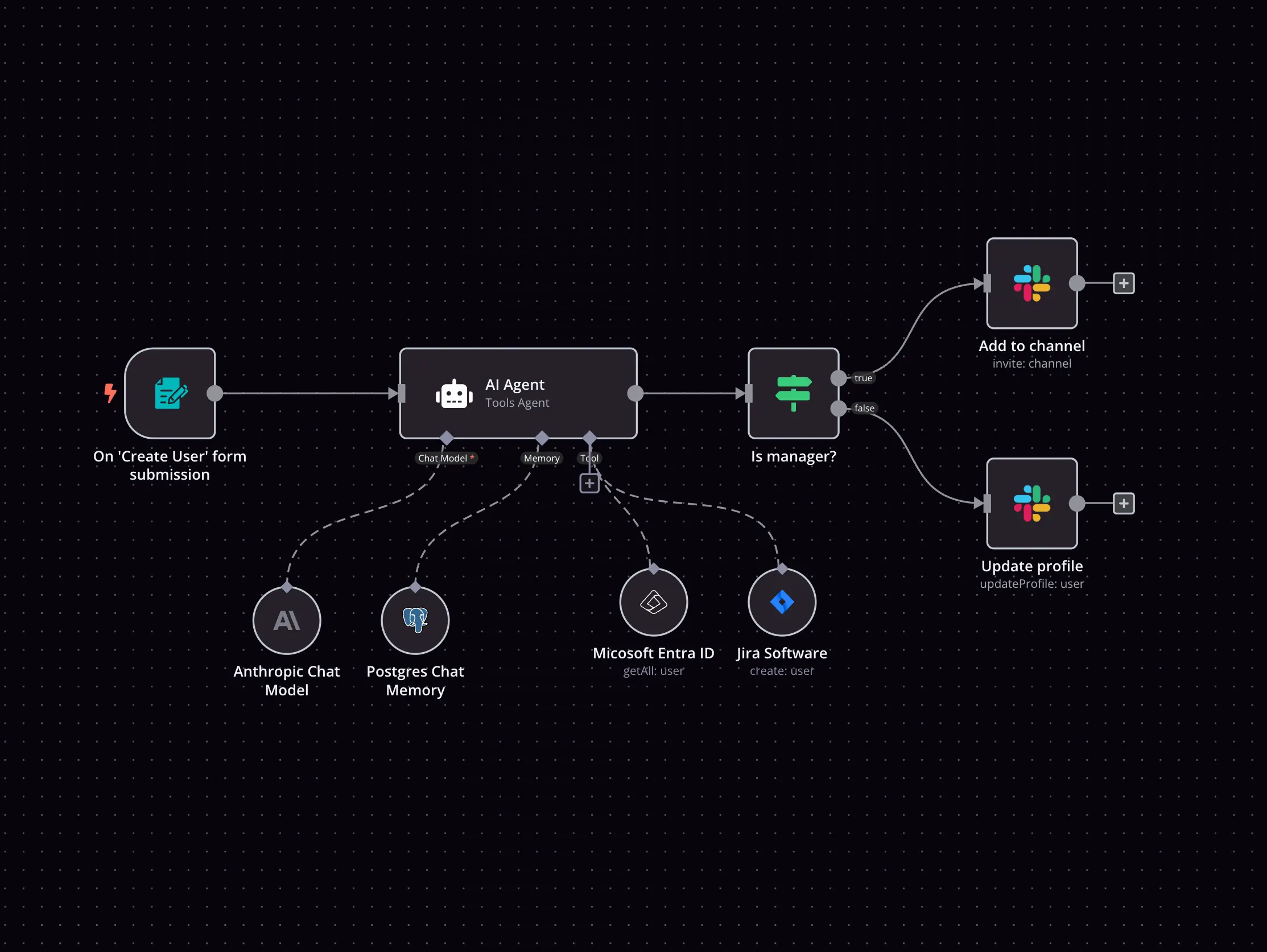QuintaDB and Radar integration
Save yourself the work of writing custom integrations for QuintaDB and Radar and use n8n instead. Build adaptable and scalable Data & Storage, workflows that work with your technology stack. All within a building experience you will love.


How to connect QuintaDB and Radar
Create a new workflow and add the first step
In n8n, click the "Add workflow" button in the Workflows tab to create a new workflow. Add the starting point – a trigger on when your workflow should run: an app event, a schedule, a webhook call, another workflow, an AI chat, or a manual trigger. Sometimes, the HTTP Request node might already serve as your starting point.
Build your own QuintaDB and Radar integration
Create custom QuintaDB and Radar workflows by choosing triggers and actions. Nodes come with global operations and settings, as well as app-specific parameters that can be configured. You can also use the HTTP Request node to query data from any app or service with a REST API.
Supported API Endpoints for QuintaDB
Get All databases
Retrieve a list of all databases.
Get Database by ID
Fetch information of a specific database using its ID.
Get database
Fetch database information by name.
Update database
Update an existing database by its identifier.
Create database
Create a new database with a specified name and form name.
Create database
Creates a new database with the specified name and form.
List forms
Fetches all database forms associated with a specific APP_ID.
Get entity
Fetch form information by form ID.
Delete form
Removes a specified form from the application.
Create Form
Creates a new form within the specified application.
Get Field by Name
Fetches the properties of a specific field by name from the entity.
Update field
Update the settings of a specific field in an entity.
Create entity property
Creates a property for a specified entity using JSON format.
Get total by column
Retrieves the total of a specific column for a given entity based on the field ID using JSON format.
Get record
Fetch a specific record using its ID.
Search entities
Fetch form information by database name and form name in JSON format.
Fetch all fields
Retrieve properties of all form fields.
Get field by ID
Retrieve properties of a specific field using its ID.
Run action
Executes a specific action on the property ID.
Fetch all records
Fetches all records for a specified app ID and entity ID.
Update record
Updates an existing record with provided values.
Update multiple records
Updates multiple records in a table or report based on specified identifiers.
To set up QuintaDB integration, add the HTTP Request node to your workflow canvas and authenticate it using a generic authentication method. The HTTP Request node makes custom API calls to QuintaDB to query the data you need using the API endpoint URLs you provide.
See the example hereThese API endpoints were generated using n8n
n8n AI workflow transforms web scraping into an intelligent, AI-powered knowledge extraction system that uses vector embeddings to semantically analyze, chunk, store, and retrieve the most relevant API documentation from web pages. Remember to check the QuintaDB official documentation to get a full list of all API endpoints and verify the scraped ones!
Supported API Endpoints for Radar
Track location
Tracks a location update and returns the user and the events generated.
Get context
Gets context for a location based on coordinates.
Forward geocode address
Geocodes an address, converting address to coordinates.
Reverse geocode coordinates
Reverse geocodes a location, converting coordinates to address.
Get geocode by IP address
Geocodes the requester's IP, converting IP address to city, state, and country.
Autocomplete addresses
Autocompletes partial addresses and place names, sorted by relevance and proximity.
Search users
Searches for users near a location, sorted by distance.
Search geofences
Searches for geofences near a location, sorted by distance.
Search places
Searches for places near a location, sorted by distance.
Validate address
Validates the input address.
Calculate distance
Calculates the travel distance and duration between an origin and a destination.
Calculate distance matrix
Calculates the travel distances and durations between multiple origins and destinations for up to 625 routes.
Match route
Snaps points collected along a route to roads that were most likely traveled on.
Get directions
Calculates the most efficient route between two or more locations to visit in order.
Optimize route
Calculates the optimal ordering and route to visit a list of locations.
Create user
This endpoint allows the creation of a new user in the Radar system.
List users
This endpoint retrieves a list of users tracked in your project.
Update user
This endpoint updates the information of an existing user.
Delete user
This endpoint removes a user from the Radar system.
List users
Lists users sorted by updatedAt.
Get user
Gets a user referenced by Radar _id, userId, or deviceId.
Delete user
Deletes a user which can be referenced by Radar _id, userId, or deviceId.
To set up Radar integration, add the HTTP Request node to your workflow canvas and authenticate it using a generic authentication method. The HTTP Request node makes custom API calls to Radar to query the data you need using the API endpoint URLs you provide.
See the example hereThese API endpoints were generated using n8n
n8n AI workflow transforms web scraping into an intelligent, AI-powered knowledge extraction system that uses vector embeddings to semantically analyze, chunk, store, and retrieve the most relevant API documentation from web pages. Remember to check the Radar official documentation to get a full list of all API endpoints and verify the scraped ones!
QuintaDB and Radar integration details
FAQ
Can QuintaDB connect with Radar?
Can I use QuintaDB’s API with n8n?
Can I use Radar’s API with n8n?
Is n8n secure for integrating QuintaDB and Radar?
How to get started with QuintaDB and Radar integration in n8n.io?
Looking to integrate QuintaDB and Radar in your company?
The world's most popular workflow automation platform for technical teams including
Why use n8n to integrate QuintaDB with Radar
Build complex workflows, really fast


